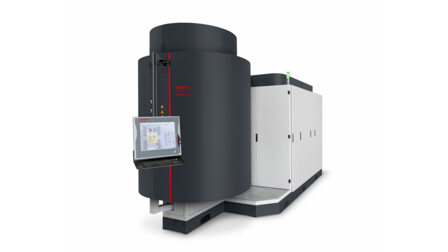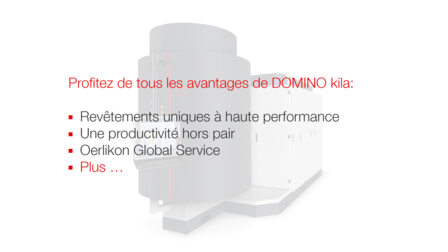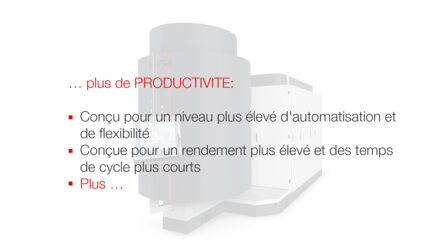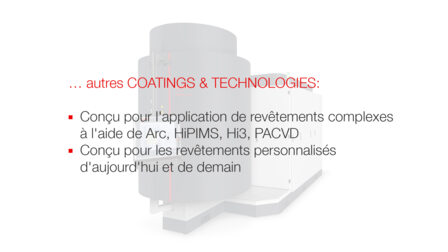La DOMINO kila flex répond à toutes les exigences d'une machine de production flexible, orientée vers le client et nécessitant peu d'entretien, qui garde toutes les portes ouvertes pour les demandes spéciales. Ainsi, la chambre PVD octogonale librement accessible, avec deux portes pour le chargement et le déchargement, est une plate-forme idéale pour l'automatisation et la facilité d'utilisation avec une maintenance réduite. Parallèlement, outre les technologies d'arc et de pulvérisation cathodique, des systèmes de précurseurs PACVD peuvent également être utilisés et intégrés dans le système.
- Arc APA, pulvérisation HiPIMS ou technologie HI3 sur un maximum de 6 brides
- Nouvelle technologie de gravure ADVANCED AEGD
- Chambre en acier inoxydable à double paroi, refroidie à l'eau et accessible des deux côtés par deux portes de chambre
- Ouverture et fermeture automatiques de la porte de chargement pour le processus d'automatisation
- Précurseurs pour divers procédés PACVD, également en combinaison avec un procédé de nitruration
- Adaptation de diverses technologies et systèmes d'analyse (plasma) en fonction des besoins du client








































